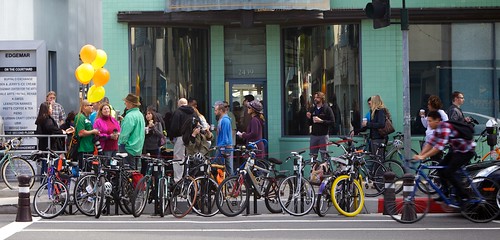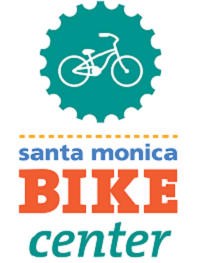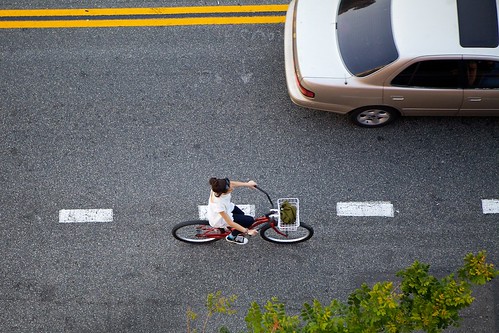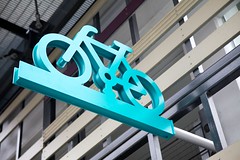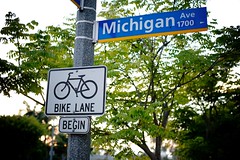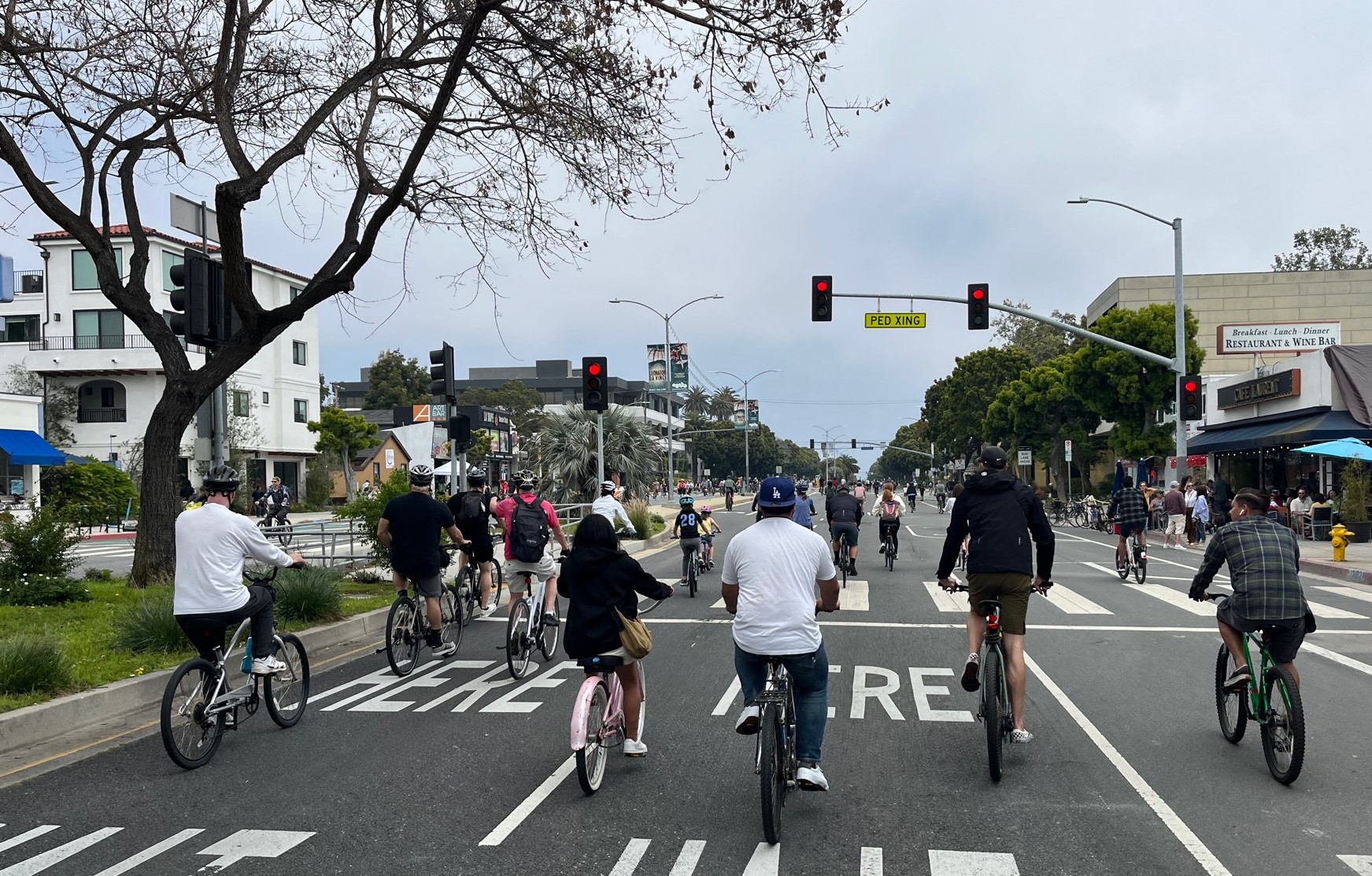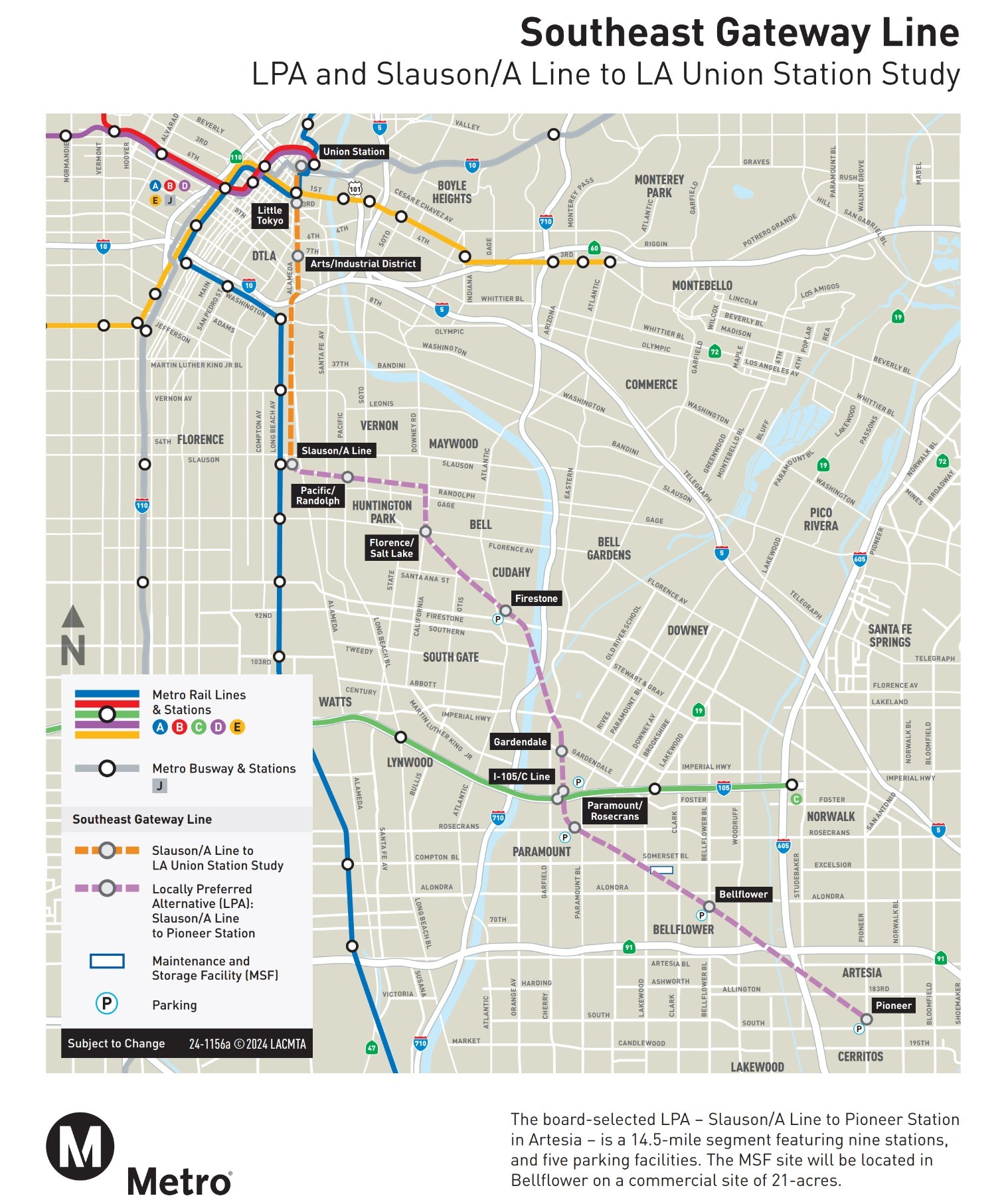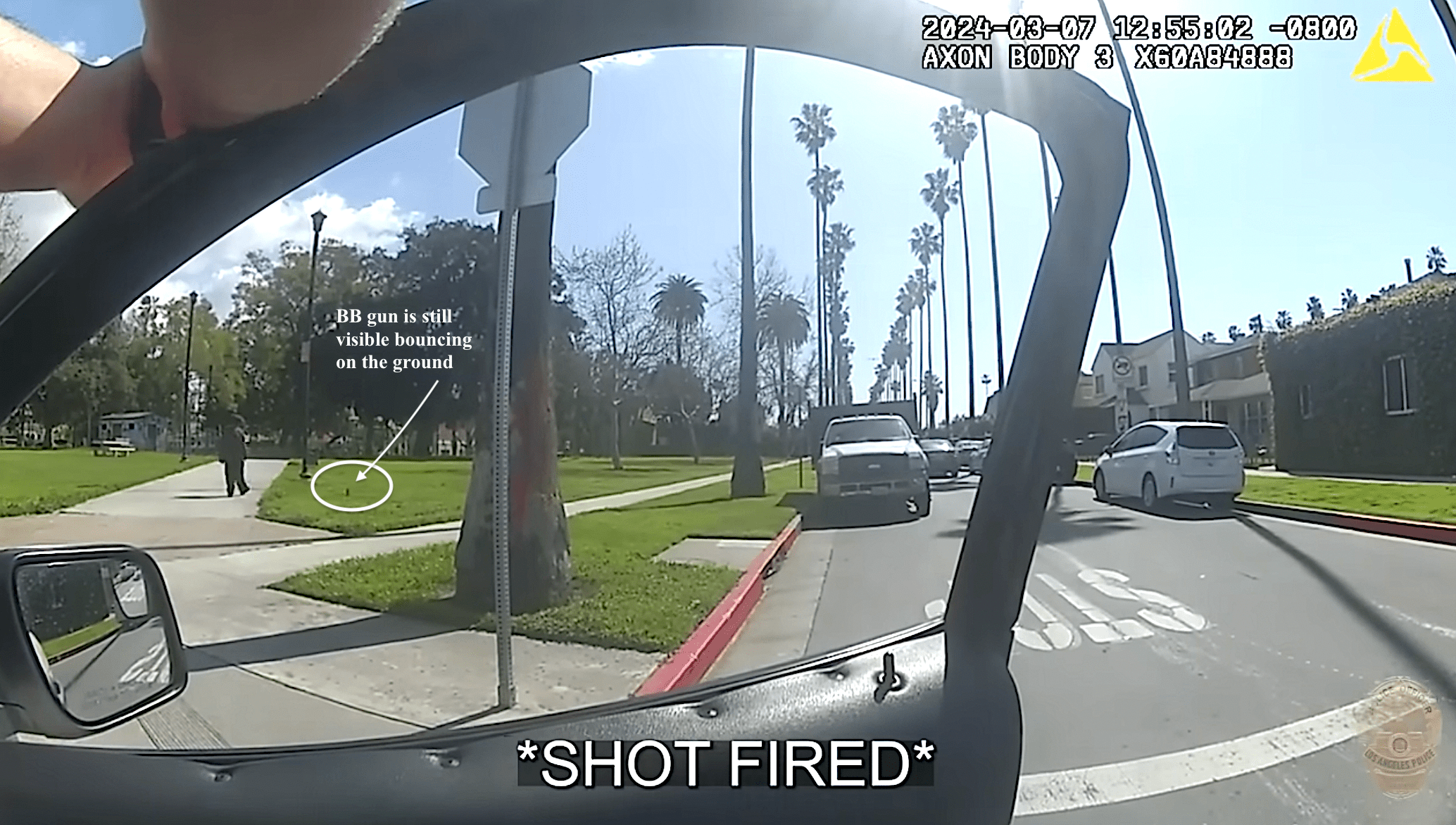Santa Monica Monica Staff Present Bike Action Plan Update
11:26 AM PDT on August 31, 2012
This week Santa Monica planner Lucy Dyke, the city’s Deputy Director for Special Projects (a.k.a. the person in charge of making bike stuff happen) presented to the city planning commission an update on the status of implementation of the Bike Action Plan. Although most of the progress outlined was highlighting projects I’ve seen or experienced firsthand, such as the bike lane essentially to my front door on 14th Street, it was helpful to see all of the projects laid out in one place. Some new snap shots of ridership gains and other kinds of data were reported as well.
Regarding ridership, it’s important to preface by saying the data we have to go off of is pretty incomplete. For example bike mode share for commute trips to major employers in the city that participate in traffic surveys found bike ridership increased from 3.3% - 4.4% (a 33% increase). It’s great to see that number bump up noticeably in a fairly short amount of time, but work commute centric data collection leaves out the wide range of trips people make. As was pointed out to me during my live tweeting updates, work commutes only represent about a fifth of the number of trips we make. If we are building a network to serve more users, and for more uses, we need some deeper examination of those other 4/5 of our trips.
For the purposes of reaching the city’s general plan goal of maintaining no net new car trips in the PM rush hour, of course work commutes take a particular focus. That doesn’t mean non-work related trips shouldn’t be highly relevant to that specific priority. As Tom Vanderbilt discusses in his book “Traffic: Why We Drive the Way We Do (and What It Says About Us)”, there is a reason the PM rush hour is always worse than the AM one. Other types of trips and errands are more common in the afternoon than the early morning. Traffic jams are also non-linear, that is a small shift up or down in number of vehicles, can have a disproportionate change. Looking at that smaller number of trips being made for other reasons can matter a great deal to unlocking the worst of jammed intersections.
I place a lower priority on that goal than other considerations. Unclogging entirely jammed intersections is great. However going too far with smoothing things along and we get people driving faster than is safe or prudent for those who place a higher value on human life than motoring speed and convenience.
Other data collected seems to suggest we are seeing more bike trips at peak times than the work commute surveys might suggest on their own. Broadway, which has had bike lanes for a very long time and has always been one of the most popular on-street corridors in the city, saw a 52% bike ridership increase in the 2 hours measured in the morning and 26% increase in the late afternoon and early evening. As someone who rides on Broadway daily, I can attest to seeing a lot more people out on bikes, and a number of my readers chimed in with their own anecdotes supporting the observation as well.
Santa Monica's Bike Center is the largest bike parking and service facility in the country (by number of spaces; 360 bike spaces in what was space for 27 cars). Dyke was excited to report the facility was “performing ahead of expectations” and is already “financially self sustaining” with steadily growing membership. Bike Center rental services are very well utilized. They could barely keep the bikes in stock on sunny summer days.
Prior to passing the new bike plan last November, Santa Monica, (a city of 8 square miles), had 37 miles of bike lanes. Since then 14 miles of new bike lanes, and 12.7 miles of routes with sharrows have been added. More intersections have also had camera detection systems installed that can reliably detect bikes, and at such intersections, small bike symbols with dashed lines indicate where to trigger the light, which I’m sure you’ve seen if you’ve done any riding in Santa Monica lately.
More new bikeway development and bike parking were added in the past year than over the entire rest of the time I’ve been living here for 6 years. I hope this momentum can be carried forward and even accelerated overtime. At such a pace, Santa Monica could become a model city for demonstrating the value of solid bike connections with rail development when the Expo Line and it's adjacent bikeway arrive in 2015.
There are also some bigger moves I would like to Santa Monica accomplish in year 2 of the bike plan. The painted bike lanes, particularly the new designs where we have some extra wiggle room from opening car doors and passing traffic, are great and will make existing bike riders more comfortable. They will likely attract more people that have been on the fence as well, which I seem to be noticing to at least some extent already. However for the most risk adverse potential users, a painted line may not be enough assurance on streets that still have fast moving traffic.
Other items in the bike plan tool kit we haven't seen yet that lay in some permanent infrastructure are protected bike lanes (or cycle tracks), that physically separate riders from traffic on the street, and neighborhood greenways that use traffic calming and diversion measures to turn lower traffic volume residential streets into slower and safer environments that give higher priority to throughway bicycle and pedestrian travel.
Planning has already begun for some of these ideas, such as the proposed Michigan Ave. greenway connecting the highschool to points further East. Projects like this will be more expensive and require more public outreach but Santa Monica has checked off a lot of boxes in the low hanging fruit category. Protected bike lanes also present unique challenges when meeting intersections that require careful consideration, but that shouldn't deter us from taking on the challenge. We've approached a fairly cohesive network reach, especially by regional standards. Now it's time now to start experimenting with bigger ideas that will serve more of the public not yet comfortable with existing facilities.
For our political leaders, budget talks will likely dominate the years ahead as there continues to be fall out from slashes at the state and federal level, but these projects are worth it. Even if the immediate financial benefit is unclear and difficult to measure at first. Enabling more people to bike for shorter trips, commutes, errands, and enjoyment, will foster a healthier public, utilize our land more efficiently and reduce our dependance on the volatile market for diminishing petroleum reserves. We may also find people that aren't exporting their earnings to British Petroleum or Exxon with every journey have more money in their pocket to spend at local bars and restaurants, returning more wealth into the community. Bikes are a win win for our bottom line.
Stay in touch
Sign up for our free newsletter
More from Streetsblog Los Angeles
This Week In Livable Streets
Active Streets Mission-to-Mission, LAPD reports on its use of force in 2023, Pasadena Transit plans, Metro subway construction, and more
Eyes on the Street: Santa Monica Connection from E Line Bike Path to Downtown Is Almost Complete
“Always be closing gaps in your bikeway network.”
CicLAvia Opens Venice Boulevard – Open Thread
CicLAvia opened six miles of Venice Boulevard - from Culver City Station to Venice Beach
LAPD shoots, strikes unarmed unhoused man as he walks away from them at Chesterfield Square Park
The newly released briefing video depicts Robles as non-compliant and claims officer Gomez-Magallanes shot him for pointing a weapon at officers, but body cam footage shows Gomez-Magallanes continued to fire at - and ultimately hit - Robles after he turned away and tossed the BB gun aside.
